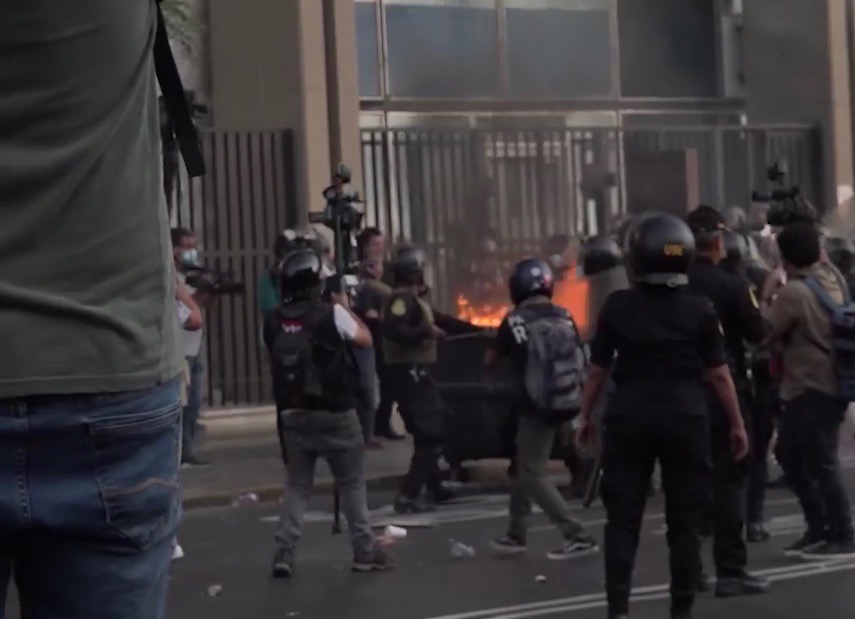 Dispatches
DispatchesAnjana Meza is a JURIST Staff Correspondent in Lima, and a law student in the Facultad de Derecho, Pontificia Universidad Católica del Perú.
In recent weeks, there have been major demonstrations in Peru by farmers and transporters protesting a lack of state support for agriculture and a rise in the price of gasoline. The demonstrations started after March 21 in Huancayo, a city of some 500,000 people located in the department of Junín, in central Peru, about 120 miles from Lima.
In these first protests, there was strong police repression and serious clashes between protesters and the police. This caused the unfortunate deaths of three people. Recently, Peru’s Prosecutor’s Office opened an investigation into these deaths, since they allegedly occurred due to an abuse of police force.
On April 1, the protests reached Lima, the capital of Peru where I live. Chaos took over the city. Roadblocks began which caused shortages in the markets of the capital. Stores were looted and private property was damaged by people who took advantage of the city’s chaos to commit their misdeeds. There were more clashes between protesters and the police.
On April 4, there was a large protest in the main streets of Lima. I was able to get some photos of these protests and I talked to the protesters. This is what some of them said:
- “[Peruvian President Pedro] Castillo should have resigned from office a long time ago, all he does is create chaos and poverty”.
- “Let it be clear that the protest is not only against Castillo, but against all politicians. We want all politicians to leave, the president, his ministers and all congressmen, who are thieves who take advantage of the people”.
- “With this protest, we want to make the voice of the people heard, there have already been several deaths in Huancayo and nobody did anything, so we hope that in Lima they will pay attention to us. It is a problem that the other departments of Peru are forgotten, we have been protesting for several days, but they only pay attention to us when we are in the capital”.
- “These protests are not the fault of Castillo alone, but of all those large companies that take advantage of small farmers and transporters, they should know that the people reject their behavior, and we hope that the State does something to control these companies”
Although the statements are varied, they have in common a feeling of discontent with the political and economic situation of the country.
After the April 4 protest, I saw on the news that President Castillo had announced a curfew in Lima and Callao for April 5. However, this measure was questioned by some, as it was trying to avoid future protests and did not meet the regulatory requirements. Peru’s Ombudsman’s Office said that it was an unconstitutional measure.
The measure was also announced by the president at night, which meant that many people did not find out about the news until the next day, when they had difficulties getting around. This was the case for some of my friends and family. However, the curfew did not last all day. It was highly criticized and the president left it without effect during the afternoon of April 5.
In the last couple of days, President Castillo and his ministers have been meeting with farmers and transporters to reach an agreement and avoid further protests. On April 7, the president and his ministers traveled to Huancayo, where the protests began, to try and reach an agreement with the protesters. Controversy continues, however, as Peruvian Prime Minister Anibel Torres gave a local speech in which he praised Adolf Hitler’s Germany as a model for Peruvian development, a comment that struck me and drew immediate criticism from national and international rights groups.

